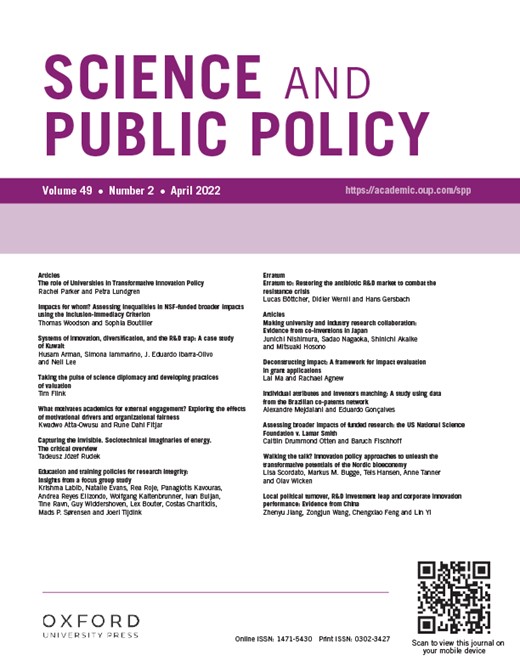-
Views
-
Cite
Cite
Junichi Nishimura, Sadao Nagaoka, Shinichi Akaike, Mitsuaki Hosono, Making university and industry research collaboration: Evidence from co-inventions in Japan, Science and Public Policy, Volume 49, Issue 2, April 2022, Pages 268–288, https://doi.org/10.1093/scipol/scab079
Close - Share Icon Share
Abstract
This paper examines the making of university and industry research collaboration from the perspective of matching theory. Our analysis, based on an original survey in Japan, aims at identifying the mechanism of matching. The major findings are as follows. There is significant evidence for positive assortative matching at the project level: a researcher with better seeds or better needs gives a higher value to the partner’s research capability and the goodness-of-fit between the project and the partner’s capability in selecting its partner. The projects with the partners selected for research capability and goodness-of-fit are associated with high university and industry research collaboration performance. Furthermore, own contact is most used for positive assortative matching. These results indicate the importance of deep field knowledge and tacit knowledge of the researcher in the search process. These findings suggest that technology transfer policy would need to pay significant attention to the contribution of the decentralized matching process.



